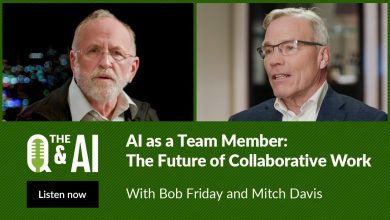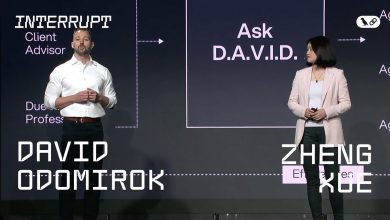 In the early 1990s, Michael Hammer ignited a revolution with his seminal work on Business Process Re-engineering (BPR), urging organizations to radically rethink and redesign their processes to achieve dramatic improvements in performance, efficiency, and customer value.
In the early 1990s, Michael Hammer ignited a revolution with his seminal work on Business Process Re-engineering (BPR), urging organizations to radically rethink and redesign their processes to achieve dramatic improvements in performance, efficiency, and customer value.
Today, a new transformative force—Agentic Process Automation (APA)—builds on Hammer’s vision, propelling BPR into an unprecedented era of innovation.
Unlike traditional automation, APA leverages intelligent, autonomous agents that think, learn, and collaborate, acting not just as tools but as dynamic partners in orchestrating complex workflows.
APA – Agentic Process Automation
These agents anticipate challenges, optimize end-to-end processes, and unlock extraordinary value, echoing Hammer’s call for bold reinvention while harnessing cutting-edge technology.
In an era where efficiency, adaptability, and innovation define success, Agentic Process Automation (APA) emerges as a transformative force, poised to reshape the landscape of business operations. Unlike traditional automation, which streamlined repetitive tasks, APA harnesses intelligent, autonomous agents capable of decision-making, learning, and collaboration. These agents transcend mere tools, acting as dynamic partners that orchestrate complex workflows, anticipate challenges, and unlock unprecedented value.
This book explores how APA is ushering in a new era of Business Process Re-engineering (BPR), redefining how organizations operate, compete, and thrive.
By blending cutting-edge technology with strategic reinvention, APA empowers businesses to dismantle silos, optimize end-to-end processes, and create agile, future-ready enterprises. Join us on a journey to discover the principles, applications, and profound impact of this revolutionary paradigm, and learn how to harness its potential to transform your organization in a rapidly evolving world.
Business Process Re-engineering (BPR)
Michael Hammer’s Business Process Re-engineering (BPR), introduced in the early 1990s, is a management strategy focused on radically redesigning business processes to achieve dramatic improvements in performance, efficiency, quality, and customer satisfaction.
Hammer, in his landmark 1990 Harvard Business Review article, “Reengineering Work: Don’t Automate, Obliterate,” argued that incremental improvements were insufficient in a rapidly changing global economy. Instead, he advocated for a fundamental rethinking of how organizations operate, challenging outdated assumptions and leveraging technology to transform core processes.
Key Principles of Hammer’s BPR:
- Radical Redesign: BPR calls for a complete overhaul of processes, not just tweaking existing ones. It involves questioning the “why” and “how” of processes to eliminate unnecessary steps and create streamlined, value-driven workflows.
- Customer-Centric Focus: Processes should be restructured to prioritize customer needs, ensuring outcomes like faster delivery, higher quality, or better service.
- End-to-End Process Orientation: BPR emphasizes redesigning entire processes (e.g., order fulfillment or product development) rather than optimizing individual tasks or departments, breaking down silos to enhance flow and efficiency.
- Leveraging Technology: Hammer saw information technology, particularly emerging systems like databases and communication networks, as enablers for reengineering, allowing for new ways of organizing work (e.g., shared data systems to reduce redundancies).
- Empowerment and Simplification: BPR often involves flattening hierarchies, empowering employees to make decisions, and simplifying complex workflows by eliminating non-value-adding activities.
- Outcome-Driven Metrics: Success is measured by significant improvements in metrics like cost, time, quality, or customer satisfaction—often targeting gains of 50% or more, not marginal 5-10% improvements.
Core Concepts:
Hammer defined a business process as a set of activities that takes inputs and creates outputs valuable to the customer. BPR seeks to “obliterate” inefficient processes, replacing them with innovative designs. For example, instead of automating a flawed manual process, BPR might involve creating a new process where customers directly input orders into a system, bypassing intermediaries.
Examples of BPR in Practice:
- Ford Motor Company: In the 1980s, Ford reengineered its accounts payable process. Instead of having multiple departments verify invoices, they implemented a system where suppliers entered data directly, and payments were triggered automatically upon receipt of goods, slashing processing time and costs.
- Taco Bell: By rethinking its restaurant operations as a manufacturing process, Taco Bell centralized food preparation, reduced in-store complexity, and improved speed and consistency, transforming its business model.
Impact and Challenges
BPR promised transformative results but required bold leadership and cultural change. Hammer emphasized that BPR was not about downsizing but about doing more with less. However, early implementations often faced resistance due to employee fears, poor execution, or lack of vision, leading to mixed results. Successful BPR required strong leadership, clear objectives, and alignment with organizational strategy.
Hammer’s BPR laid the groundwork for modern process improvement methodologies, influencing approaches like Lean and Six Sigma. Its emphasis on radical change and technology as an enabler remains highly relevant, particularly as technologies like Agentic Process Automation build on his ideas to drive even more dynamic, intelligent process transformations.



